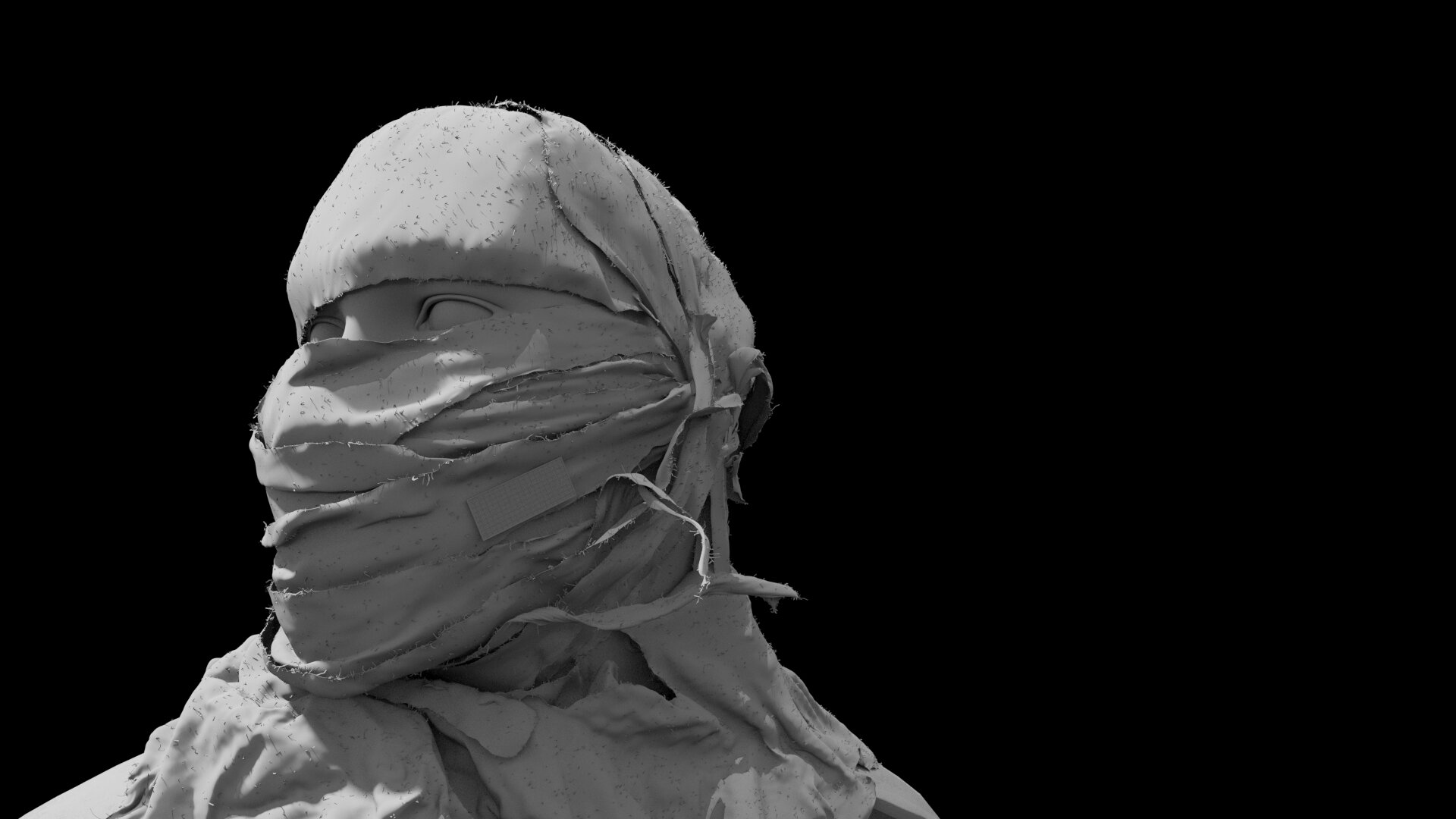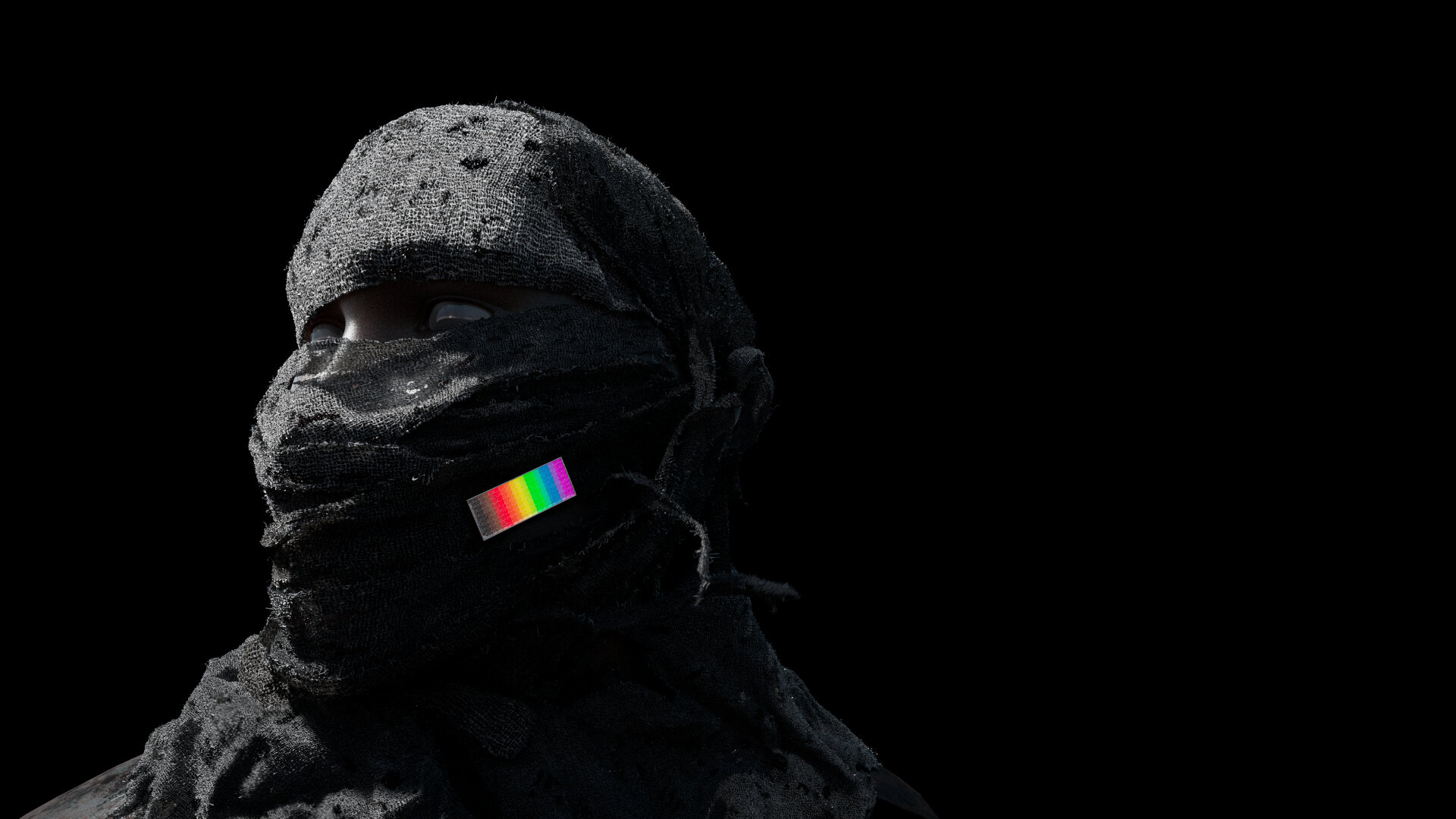Pride, 2051
The year is 2051, it’s Pride month.




Pride, 2051 is an experiment into cloth simulation and procedural fabric shading, using Houdini & Redshift.
One of the main visual inspirations for the project came from the work of Nicholas Alan Cope and Dustin Edward Arnold. The following are a couple of shots from their VEDAS project, which contains some beautiful sculptural forms and fabric textures.
I wanted to combine the Cope/Arnold concept with something more topical - facemasks! This is an early look-dev render of a rugged mask, which eventually grew into the final piece.
Sim / Drape
The headpiece was assembled in layers by draping individual fabric strips, using Vellum, starting with the face mask then layering the headscarf, and finally the shoulder piece.
Shading
The main shading element came from combining simple scanlines, horizontal and vertical. These were drawn at render time by running a sine wave function over the x/z rest coordinates of the cloth. The benefit to assembling everything from the same single piece meant that the UVs, rest position and random colour attributes could be defined at the top of the project, then fed through everything else.
I used a number of noises in Redshift at different frequencies to break up the scanline diffuse values and add granularity to the spec roughness. I also created a number of 3D noises which were added to the rest coordinates prior to the sine wave. This added random distortion to the lines, breaking up the texture even more.
To punch holes in the cloth, I ran some noises through the shader opacity input and modulated the displacement to pinch the holes inwards towards the edge.
Torn cloth reference
Subsurface scattering helped to create a more believable, back-lit material. You can see this around the interior of the eye holes:
Particles
It was a pretty simple POP setup for the bg/fg particles. Rendered as flat colour RGB.
Setup
BG particles
FG particles
Pride Badge
The aim was to create a glitchy, punky, slightly-futuristic Pride badge. I created the rainbow texture in Nuke, using a quantized horizontal gradient and converting that from HSV colourspace to sRGB. With a colour lookup I could plot the different colours (pre-conversion) by controlling the rgb gradients. Then by running noise through the x coordinates I used to draw the gradient at the top, I could glitch the rainbow colours and animate the wavelength, creating the cascade transition.
HSV values
Converted to sRGB space
The colours were quantized even further by promoting the colour attributes from the base grid points to the extruded primitives. This colour was then fed into an emissive shader.












